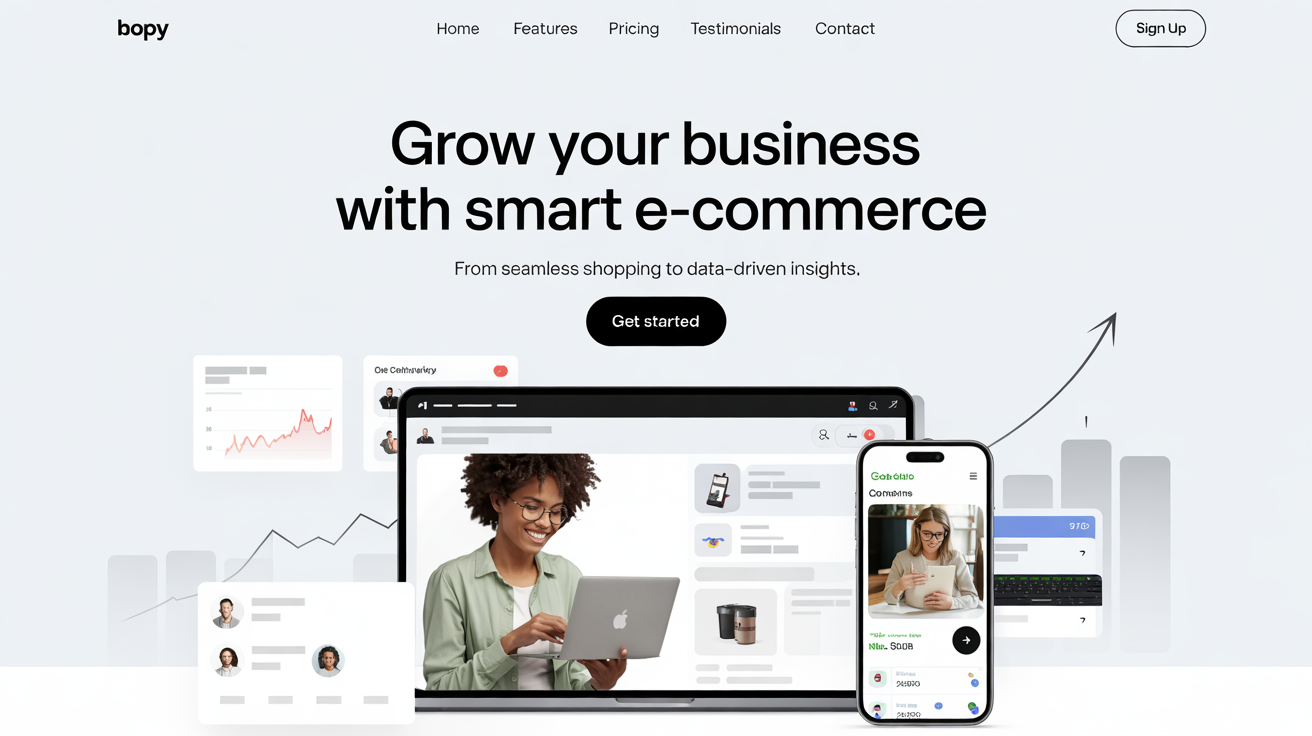The world of e-commerce is rapidly evolving, and businesses must continuously adapt to stay competitive. Whether you’re running a small online store or a large-scale digital marketplace, implementing the right e-commerce growth strategies can significantly enhance your revenue and brand visibility.
1. Optimize Your Website for Conversions
A well-optimized website is the foundation of a successful e-commerce business. Here’s what you need to focus on:
- Mobile-Friendly Design: Ensure your website is responsive and delivers a seamless experience across all devices.
- Fast Loading Speed: Slow websites lead to higher bounce rates and lost sales. Optimize images, use a content delivery network (CDN), and leverage caching.
- Clear Call-to-Actions (CTAs): Guide visitors toward making a purchase with compelling CTAs like “Buy Now” or “Get Yours Today.”
- User-Friendly Navigation: A simple, intuitive layout helps customers find products quickly and improves the shopping experience.
2. Leverage SEO for Organic Traffic
Search engine optimization (SEO) is crucial for driving organic traffic to your e-commerce site. Follow these key steps:
- Keyword Optimization: Use relevant keywords in product descriptions, blog posts, and meta tags.
- High-Quality Content: Publish blog articles, guides, and product reviews that provide value to your audience.
- Technical SEO: Optimize site speed, use structured data, and fix broken links to improve search rankings.
3. Enhance Customer Engagement with Email Marketing
Email marketing remains one of the most effective ways to nurture leads and increase conversions. To maximize success:
- Personalized Campaigns: Send targeted offers and product recommendations based on customer behavior.
- Abandoned Cart Emails: Remind customers about their abandoned carts and incentivize them with discounts.
- Loyalty Programs: Reward repeat customers with exclusive deals and early access to sales.
4. Utilize Social Media for Brand Awareness
Social media platforms offer a powerful way to connect with your audience and boost sales. Consider these strategies:
- Influencer Marketing: Collaborate with influencers to promote your products to a wider audience.
- User-Generated Content: Encourage customers to share their experiences with your products on social media.
- Paid Ads: Invest in Facebook, Instagram, and TikTok ads to drive targeted traffic to your store.
5. Offer Multiple Payment and Shipping Options
Consumers value convenience, so providing flexible payment and shipping options can improve conversions.
- Payment Methods: Accept multiple payment options, including credit/debit cards, digital wallets, and cryptocurrency.
- Fast Shipping: Partner with reliable logistics providers and offer same-day or express shipping when possible.
- Transparent Pricing: Clearly display shipping fees to avoid cart abandonment.
6. Implement Retargeting Strategies
Retargeting helps bring back potential customers who have shown interest in your products.
- Retargeting Ads: Display personalized ads to visitors who left without making a purchase.
- Exclusive Discounts: Offer time-sensitive discounts to encourage conversions.
- Email Follow-ups: Send follow-up emails to customers who browsed specific products.
7. Expand to Multiple Sales Channels
Selling on multiple platforms can increase your brand reach and revenue.
- Marketplaces: List your products on Amazon, eBay, and Etsy to reach a larger audience.
- Social Commerce: Enable direct shopping on Instagram and Facebook.
- Dropshipping & Wholesale: Partner with suppliers to scale your business without holding inventory.
Final Thoughts
E-commerce growth requires a mix of strategic marketing, customer engagement, and operational efficiency. By optimizing your website, leveraging SEO, utilizing social media, and diversifying your sales channels, you can scale your online store successfully. Start implementing these strategies today and watch your e-commerce business thrive!





